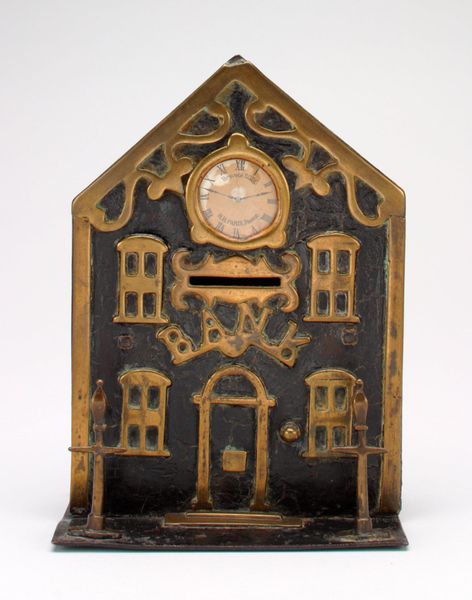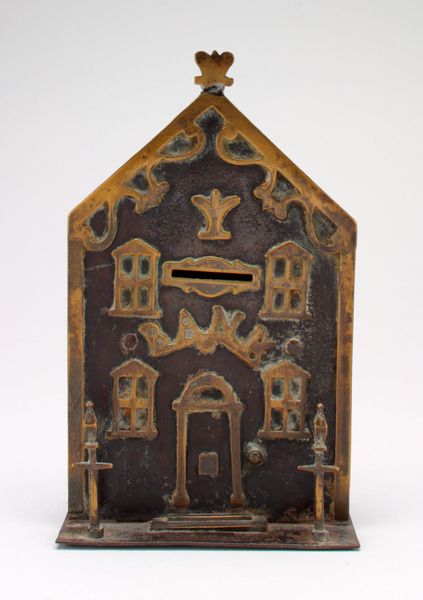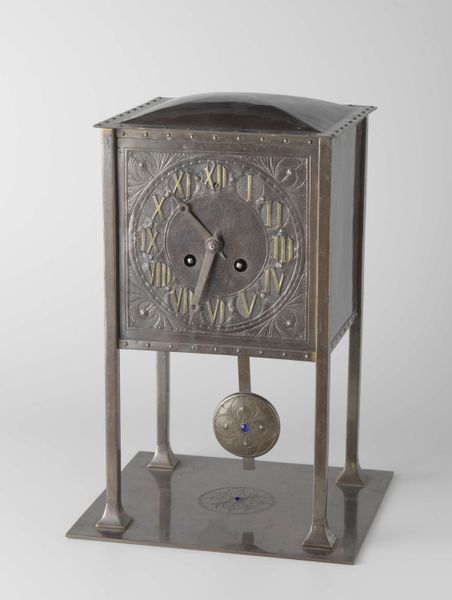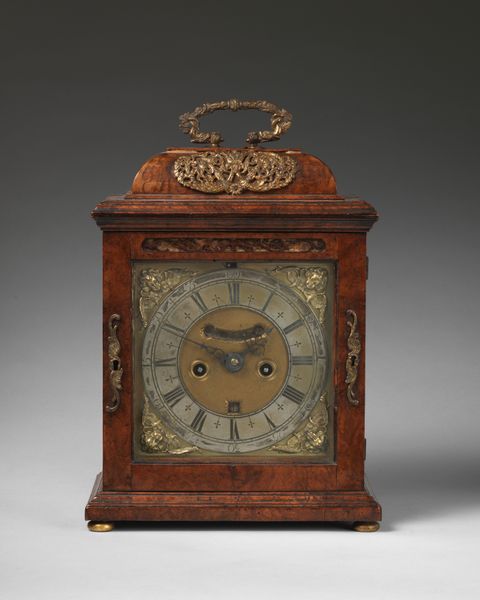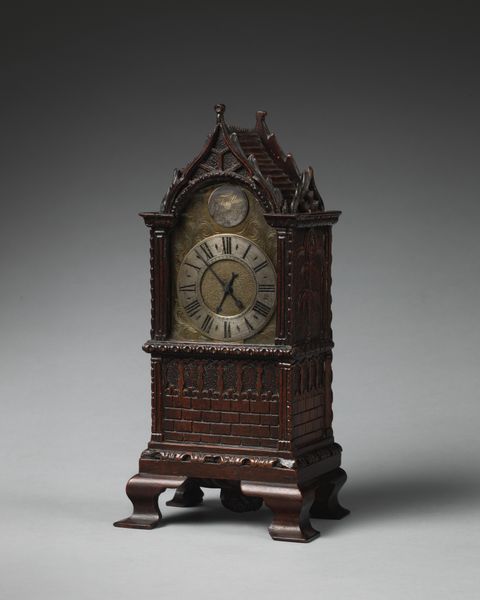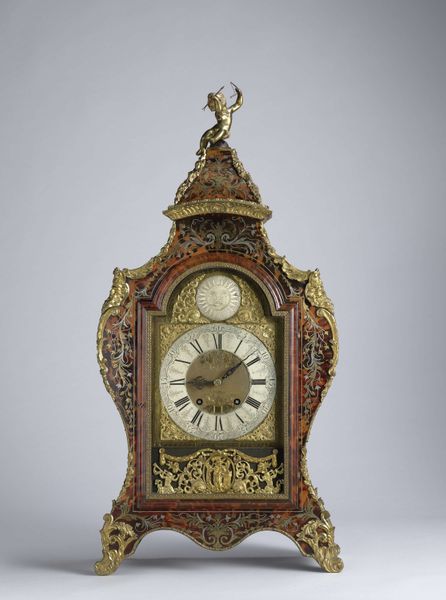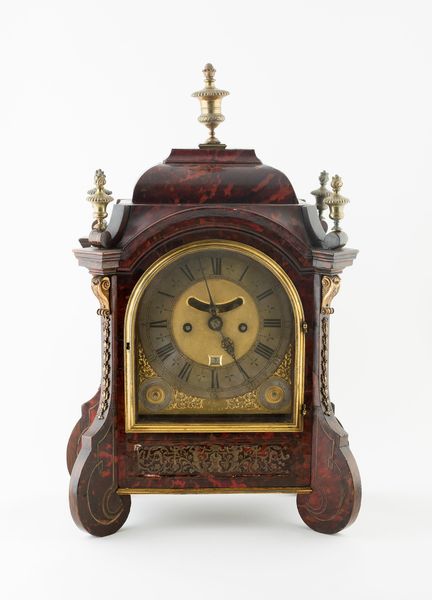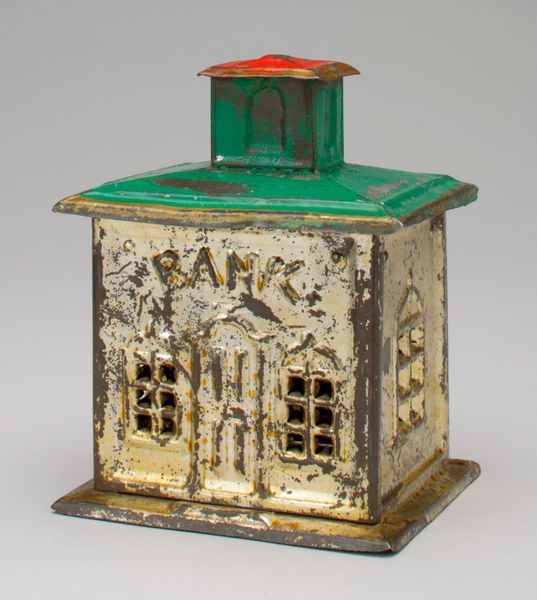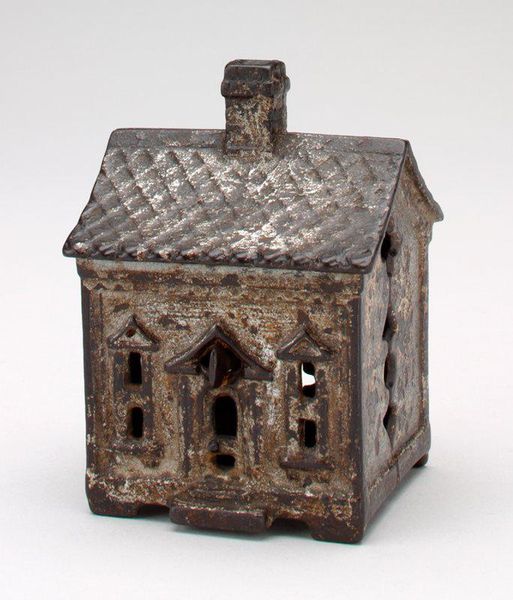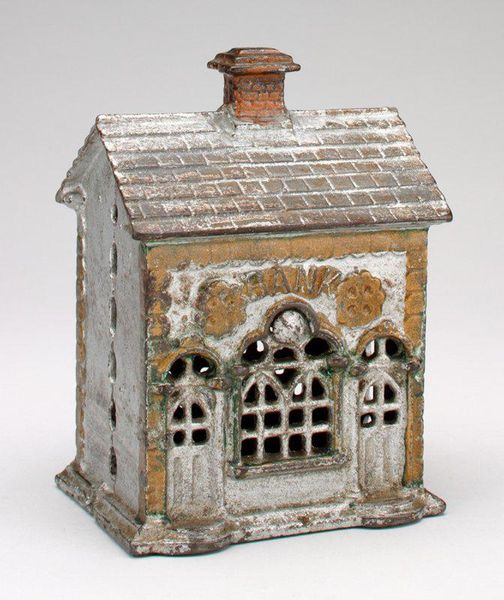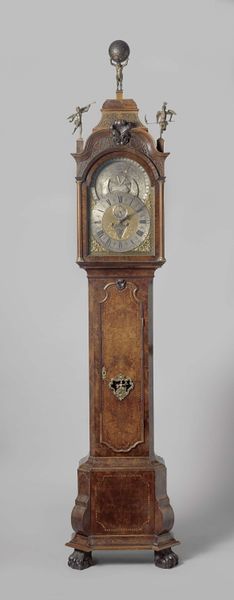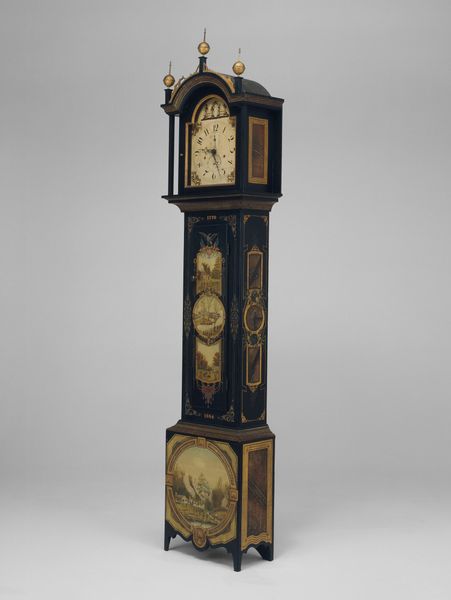
brass, metal, ceramic, paper, glass, sculpture
#
brass
#
metal
#
ceramic
#
paper
#
glass
#
sculpture
#
france
#
decorative-art
Dimensions: 7 5/8 x 4 1/8 x 2 1/2in. (19.4 x 10.5 x 6.4cm)
Copyright: Public Domain
Editor: This is a late 19th century French Tzedakah Box, meaning charity box, made of brass, metal, ceramic, paper and glass. Its decorative style immediately gives me a cozy feeling; like something found on a mantelpiece. What historical context is important for understanding a piece like this? Curator: It’s interesting you find it cozy. The Tzedakah box represents more than just simple domesticity. It reflects a complex interplay of religious practice and social responsibility, becoming a tangible reminder of Jewish values, like helping others. Considering its origin, how might the location in France shape the story behind the box? Editor: Well, I imagine a French context means that Jewish people giving to the charity box are thinking of their identity and community outside the context of their ancestors, since many Jewish people didn’t originate in Europe. I also see a clock! How would that detail be read by someone at the time? Curator: The integration of a clock is very curious, isn’t it? Does the timepiece serve a practical function, reminding people of opportune moments to give? Or perhaps a deeper philosophical statement about time’s passage and the urgency of charitable deeds? Think about how that concept may reinforce a sense of community values in a commercial world. Editor: So the object’s decorative aesthetic, including the clock, also served as a kind of moral instruction! It seems like this box could reveal a lot about social concerns present at that specific historical moment, then. Curator: Precisely. The French setting places it within the broader European context where Jewish communities sought integration amidst social and political challenges, using decorative arts and design to negotiate and express identity and values in a quickly modernizing world. I wonder about the symbolism they wanted to communicate. Editor: Thinking about it now, it’s amazing that a single object can reflect all these dynamics between individuals, their culture, and history. Curator: Indeed. It reminds us of how artworks aren't isolated creations, but mirrors of the societies that produce and cherish them.
Comments
No comments
Be the first to comment and join the conversation on the ultimate creative platform.
